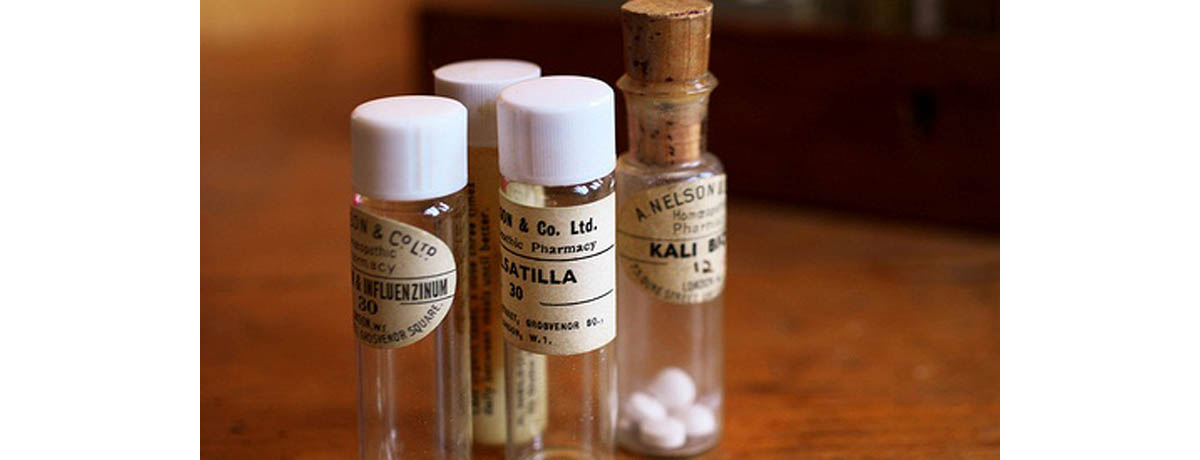Arsenic is a tasteless, odorless metalloid element that’s used in herbicides, pesticides, wood preservers, and fertilizers, among many other substances. Toxicologists report that chronic, high-level exposure to arsenic is linked to an increased risk of some cancers and cardiovascular diseases. To date, there is limited research in existence regarding whether low levels of arsenic are could also be harmful to your health.
Where might you come across arsenic, and ingest it, even without your knowledge? Let's take a look.

Homeopathic Remedies - What’s in Your Medicine Cabinet?
When you take too much of a natural medicine, you could potentially get arsenic poisoning. This can occur when you consume large amounts of arsenic for an extended period of time. Researchers have uncovered cases of arsenic poisoning reported with known homeopathic products and some kelp supplements. Some calcium supplements have measurable levels of arsenic in them, too. A thorough U.S. study of 250 herbal products found that 36 of these contained detectable arsenic levels, a scary thought.Despite serious health concerns, arsenic is often used as a diluted component in certain homeopathic remedies used for sleep disorders, anxiety, depression, allergies, digestive conditions, and obsessive compulsive disorder (OCD). In addition, some traditional Chinese medical formulas contain arsenic and these are used for asthma, cough, hemorrhoids, joint pain, psoriasis, and swelling. Doctors sometimes even give arsenic intravenously in the form of an anticancer agent to treat acute promyelocytic leukemia.
Chicken Products – Foul Play
The Food and Drug Administration (FDA) has, in the past, reported in a press release that some chicken meat contains small amounts of arsenic but that this amount is not dangerous for the consumer. Apparently, there is an ingredient called Roxarsone in some chicken feed products that contains arsenic. Roxarsone is ingested by the foul and it then makes its way to the parts of the chicken that we eat.The FDA said that people should not stop eating chicken because the amount is so small that it won’t lead to any safety concerns. Regardless, Pfizer Inc., the company that makes the feed ingredient, has said that they will pull it off the market in the United States. Roxarsone has been a concerning issue for many environmental and consumer groups. These organizations have requested that the FDA ban other animal drugs that contain arsenic as well.
Rice – Not So Nice
According to research scientists, rice is the largest dietary source of inorganic arsenic. It is a known fact that inorganic arsenic is a known carcinogen and eating it on a regular basis has been associated with increased risks of lung, skin, and bladder cancers. Research has suggested that ingesting 3.5 ounces of uncooked rice is the maximum amount of arsenic allowed by federal limit and consumers should be concerned that they could exceed it by eating rice often. While it is not clear how harmful these small amounts of arsenic in rice actually are, toxicology experts report that it would take decades for it to have some ill effect.Drinking Water – H2 OH NO!
According to the FDA, there is a small amount of arsenic in your drinking water and inorganic arsenic in some water supplies is an actual public health concern. The FDA maintains that organic forms of arsenic are essentially harmless but the inorganic form is not. Healthcare professionals report that the safest water source is one from a spring or well and even that water should be tested periodically for harmful levels of arsenic.
Some countries naturally have very high levels of inorganic arsenic in their ground water, including Bangladesh, Argentina, Chile, India, China and — the United States. Where possible, it would be safest to switch to bottled water if you live in an area where you know the ground water is contaminated with arsenic.
Apple Juice – Not as Healthy as You Think
Inorganic forms of arsenic make their way into apple juice by way of contaminated water that is added in processing. What’s more, 400 million gallons of apple juice makes its way into the United States shipped from China, a country that is known to use arsenic-based pesticides and has high levels of arsenic in the soil base. Researchers suggest that all domestic and imported sources of apple juice should be tested continually and regularly to assure public safety.Experts say that consumers should protect themselves by eating a wide variety of foods and switching brands frequently to minimize exposure from a single source of arsenic. Buying organic and washing foods thoroughly also helps. The government and public health organizations are aware of the arsenic in the water supply and are tightening up on the restrictions and regulations.
- Jaloneck, M. C. (2011). Some chicken may contain arsenic. Retrieved from: www.huffingtonpost.com/2011/06/08/arsenic-chicken_n_873299.html
- Neporent, L. (2012). Aresenic in our food supply. Retrieved from: www.youbeauty.com/nutrition/arsenic-in-food
- WebMD.com (2011). Arsenic. Retrieved from: www.webmd.com/vitamins-supplements/ingredientmono-1226-ARSENIC.aspx?activeIngredientId=1226&activeIngredientName=ARSENIC
- U.S. FDA (2011). Apple juice and arsenic. Retrieved from: www.fda.gov/Food/ResourcesForYou/Consumers/ucm271595.htm
- Photo courtesy of kh1234567890 on Flickr: www.flickr.com/photos/kh1234567890/6023522367

